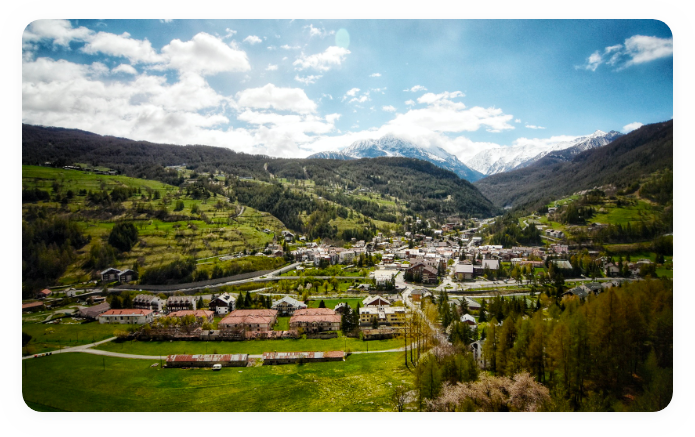The Via Ferrata is dedicated to the memory of Mario Perona and Aldo Saglia, respectively an Alpine Guide and helicopter pilot, who died on Easter Saturday 2003 in a tragic accident, which also cost the lives of four other people, following a mechanical failure of the craft in which they were flying over the mountains of the Upper Susa Valley. Although Mario and Aldo were from a more urban background, they had found a meaning for their lives in these mountains, carrying out their respective professions with great passion. Living in Cesana, one of them, and in Sestriere, the other, they immediately gained the trust and esteem of the valley inhabitants, so much so that their exploits will be remembered for years to come.
One of Mario’s many dreams was to build a Via Ferrata on the rocks of Punta Clarì, a dream that unknown to him would be fulfilled because the via ferrata is now a reality.
The itinerary was commissioned and funded by the Cesana-Claviere association, which has always believed in this type of tourism and which, in the space of a few years, has carried out multiple projects in the area satisfying a truly vast number of users; obviously with great personal commitment on the part of the mayors and administrators, as well as financial support from the two communities.
Technically, the project was carried out by the now well-established Valsusa company “Piemonte Disgaggi”, which works in the field of rock consolidation and works at great heights, with the collaboration of several mountain guides from the valley.
Access: from Cesana Torinese head towards Claviere as far as the bridge over the Piccola Dora and leave the car in the large clearing on the left. Continue along the river on the dirt road that almost immediately becomes a path, go beyond the Rocca Clarì cliff on the footbridge and continue along the path that runs by the river, pass the turnoff for the Bunker path until you reach another footbridge. Continue for a few hundred metres, until you reach the start of the Via Ferrata, very evident, located a few metres above the path itself (15 minutes).
Itinerary: Difficulty D+ via ferrata, development of bolted parts 750 m. time 3.30 h.
The equipped route spans the entire difference in height between the Piccola Dora stream and the peak of Rocca Clarì 2045 m. There are thus more than 550 metres of difference in height to cover, along an itinerary that without much beating about the bush climbs almost straight up to the peak. The very first part consists of an almost vertical pillar, then a traverse leads inside a typical gorge where two enormous limestone teeth are negotiated in succession, with sustained, aerial climbing, coming out on a ledge which joins up with the Bunker path. After a few bends, leave the path to turn left and go uphill through a rock barrier immersed in a larch wood. Another stretch of path in the wood leads to the base of the main wall, clearly visible from the road that climbs from Cesana to Claviere.
Initially the path is partly vegetated, then, with an increasingly continuous and aerial climb, you reach the edge of the ridge, which you follow now to the right now to the left until you reach a beautiful ledge formed by an enormous boulder detached in the void. A vertical and very exposed dihedral leads up to a few metres from the summit, which is reached by a short gully, then a few more metres of path until a last equipped rocky outcrop that leads to the highest point. (3.30 h)
Descent: down a little marked path in a westerly direction, with short ups and downs over the long wooded summit of Rocca Clarì, you reach some old military posts, from which you descend a dirt road to “La Coche” (ski lifts); continuing along the dirt road you descend towards the village of Claviere. Just above it turn right, cross a ski lift to take the path that leads to the San Gervasio Gorge, until you reach the bottom (under the Tibetan bridge); descend the gorge along a beautiful path equipped with wooden walkways and bridges until you pass under the start of the Via Ferrata and then to the car park. (1.30 h)

